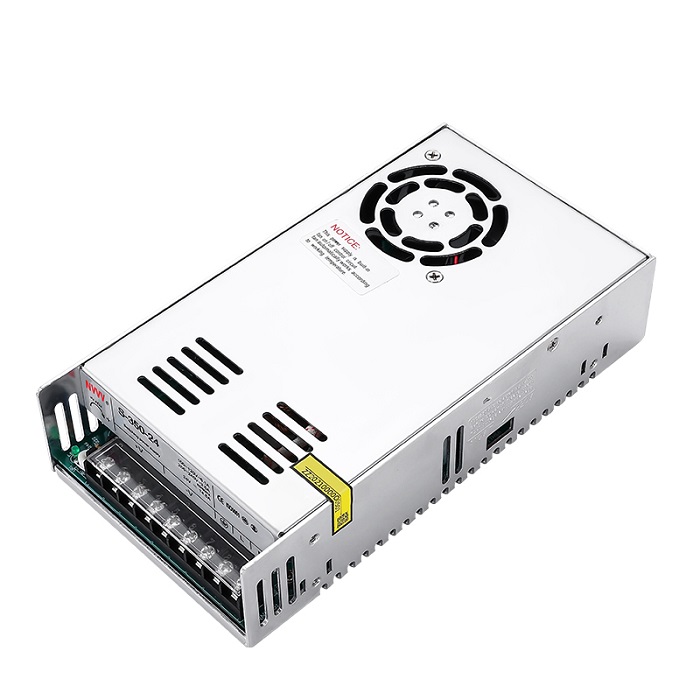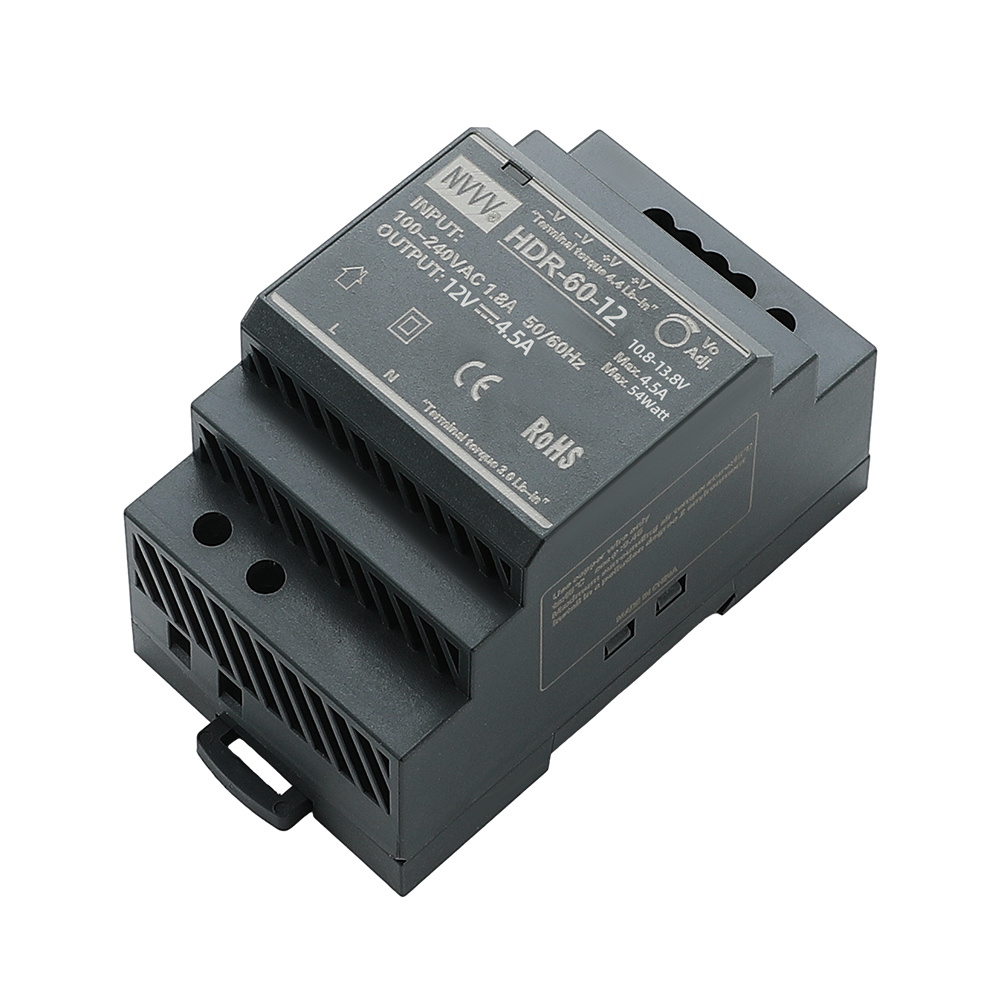How to Choose A Power Supply for Beginners?
Power supplies are key devices that convert one form of electrical energy into another and are widely used in electronic equipment, industrial systems, and household appliances. Power supplies are divided into two categories: direct current (DC) power supply and alternating current (AC) power supply. DC power provides a constant voltage and is suitable for electronic equipment and communication equipment, while AC power is suitable for household appliances and industrial equipment. Switch Mode Power Supply (SMPS) is an advanced power supply technology that regulates voltage through high-frequency switching technology. It has the advantages of high efficiency, light weight, and small size. Switching power supply is widely used in computers, communication equipment and consumer electronics. Choosing the right power supply is critical to ensuring the proper operation and safety of your equipment.
The difference between DC power supply and AC power supply
Power supplies are divided into two types: direct current (DC) and alternating current (AC). They have significant differences in power supply methods, application scenarios, and technical characteristics.
1. DC Power Supply
A DC power supply provides a constant voltage and the direction of the current does not change. Common DC power sources include batteries, DC generators and DC power adapters. DC power supply has the following characteristics:
Voltage stability: DC power supply outputs a constant voltage with small voltage fluctuations.
Unidirectional current flow: Current always flows from the positive pole to the negative pole without changing direction.
Wide application: DC power supply is widely used in electronic equipment, automobiles, communication equipment, etc.
The advantages of DC power supply include stable output, low interference, and suitable for low-voltage applications. However, its disadvantage is that the transmission distance is limited, and long-distance transmission will cause large power losses.
2. AC Power Supply
The voltage and current of an AC power source vary periodically over time. Common AC power sources include mains power, alternator, and uninterruptible power supply (UPS). AC power has the following characteristics:
Periodic changes in voltage and current: The voltage and current of the AC power supply change according to sinusoidal waves, changing direction periodically.
High transmission efficiency: AC power supply is suitable for long-distance transmission with small power loss.
Wide application: AC power supply is widely used in home power grids, industrial equipment, power systems, etc.
The advantages of AC power include high transmission efficiency and suitability for high-power applications. However, its disadvantage is that the voltage fluctuates greatly and is susceptible to electromagnetic interference.
To sum up, DC power supply and AC power supply each have their own advantages and disadvantages and are suitable for different application scenarios. Understanding their differences can help you choose the right power source to meet your specific power needs.
Common DC power supplies and AC power supplies
In daily life and industrial applications, there are many common DC power supplies and AC power supplies. Here are some common examples:
Common DC power supplies
Battery: Battery is the most common DC power supply, including disposable batteries (such as alkaline batteries, lithium batteries) and rechargeable batteries (such as nickel-metal hydride batteries, lithium-ion batteries). Generally, there are 12V DC power supply, 24V DC power supply, etc. They are widely used in portable electronic devices, remote controls, flashlights, etc.
Solar panels: Solar panels convert solar energy into direct current and are often used in solar systems to provide power to homes or industrial equipment.
DC power adapter: DC power adapter converts AC power into DC power and is used to charge laptops, mobile phones, tablets and other devices.
Car battery: The car battery is the main DC power source of the vehicle, used to start the engine and provide power to the vehicle's electrical equipment.
Common AC power supplies
Mains power: Mains power is the most common AC power supply. The power provided to homes and industries is usually 110V or 220V AC.
Alternator: Alternators are widely used in power plants and backup power systems to convert mechanical energy into alternating current.
Uninterruptible power supply (UPS): UPS is a device that provides stable AC power and is widely used in computers, communication equipment and other critical systems to ensure that power is still supplied when power is interrupted.
AC Transformer: AC transformer is used to change the voltage of alternating current and is suitable for power transmission and distribution systems.
How to choose a power supply for beginners
Choosing a power supply can be a bit complicated for beginners, but as long as you master a few basic principles and steps, you can easily find the right power supply. Here are some power supply selection guides for beginners:
1. Determine equipment needs
Know your device's voltage and current requirements: First, check the device's nameplate or instructions to find out its voltage and current requirements. For example, some electronic devices may require 5V DC, while household appliances may require 110V or 220V AC.
Determine the power requirement of the device: Calculate the power requirement of the device as the product of voltage and current. For example, a 12V, 2A device requires a 24W power supply.
2. Select the appropriate power supply type
DC power supply or AC power supply: Choose the appropriate power supply type according to the needs of the device. If the device requires DC power, you can choose batteries, DC power adapters, etc. If the device requires AC power, choose mains power or an alternator, etc.
Conversion efficiency of power supply: Choosing an efficient power supply can reduce energy loss and extend the service life of the equipment. For example, choose a high-efficiency DC power adapter or solar panel.
3. Consider the stability and safety of the power supply
Stability of the power supply: Ensure that the selected power supply output is stable to avoid damage to the equipment due to voltage fluctuations. For some devices with higher power requirements, you can choose a power supply with voltage stabilization function.
Safety of power supply: Choose a power supply with overload protection, short circuit protection and over-temperature protection to ensure safe use. Especially for equipment that requires long-term power supply, safety is particularly important.
4. Power supply compatibility
Power interface matching: Different devices may use different power interfaces, and you need to choose a matching power interface to ensure a stable connection. Common DC power interfaces include round plugs, USB interfaces, etc., while AC power interfaces include two-plug, three-plug, etc.
Compatibility of power adapter: If you use a power adapter, you need to ensure that the output voltage and current of the adapter match the needs of the device. For example, a 12V, 2A device needs to choose an adapter with an output voltage of 12V and an output current of at least 2A.
5. Considerations in actual use
Portability and ease of use: For devices that require mobile use, choose a power supply that is portable and easy to operate. For example, portable batteries or solar power adapters.
Environmental adaptability: Choose a suitable power supply according to the use environment. If used outdoors, you can choose a power source with good weather resistance, such as a waterproof solar panel.
To sum up, choosing a power supply is not complicated for beginners. As long as you master the basic calculation methods of voltage, current, and power, and consider factors such as the stability, safety, and compatibility of the power supply, you can easily find a suitable power supply. . By properly selecting the power supply, the normal operation of the equipment can be ensured and the service life of the equipment can be extended.
Conclusion
Power supplies play an integral role in modern technological equipment. Whether it is traditional DC power supply, AC power supply, or advanced switched mode power supply, they are constantly improving efficiency and reliability. Switching mode power supply, in particular, meets the needs of various complex applications with their high efficiency and versatility. Understanding and choosing the appropriate power supply can not only improve the performance and stability of the device, but also effectively extend its service life. By having an in-depth understanding of the characteristics and application scenarios of the power supply, we can provide the best power solution for the device, ensure its efficient and reliable operation, and bring higher value and experience to users.










